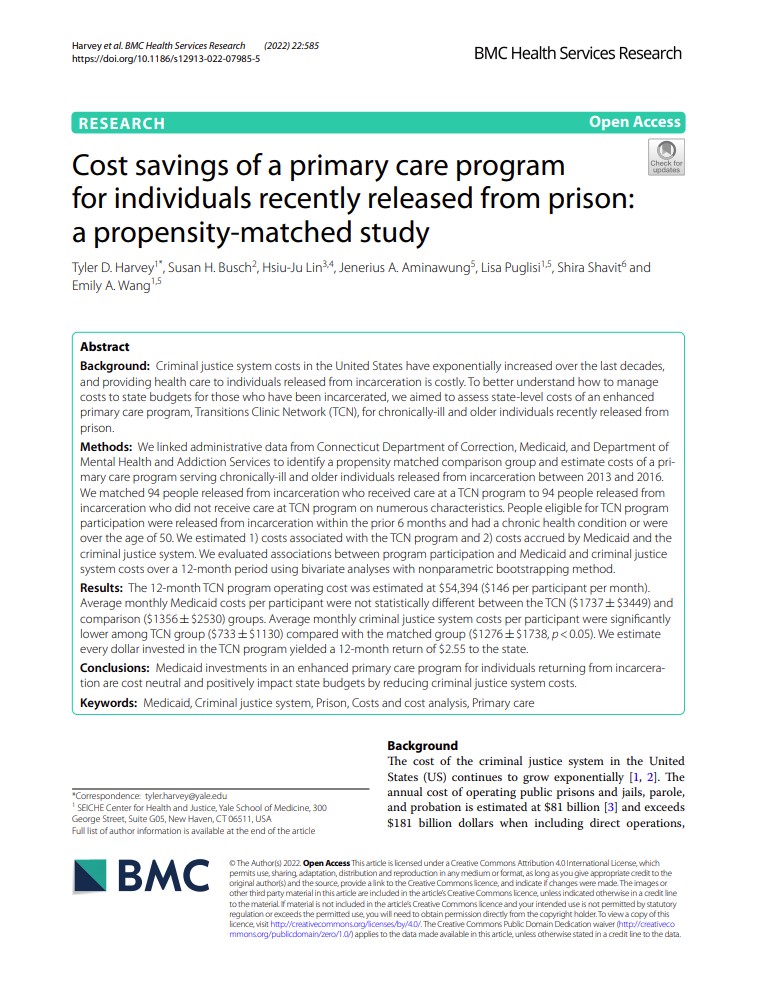Headline
State investments in enhanced primary care for older and chronically ill individuals recently released from incarceration yielded a $2.55 return on investment for Medicaid and criminal justice combined.
Context
Individuals who return from incarceration to their communities have high rates of chronic medical, mental health, and substance use disorders and of acute health care utilization upon release. The Transitions Clinic Network (TCN) delivers an enhanced primary care model that addresses the health and social needs of people returning from incarceration. The TCN model, used in 48 sites nationally, employs interdisciplinary teams of primary care providers and community health workers with lived experience of incarceration. Previous studies have shown that TCN is associated with improved health and criminal justice outcomes. This analysis of a Connecticut-based TCN program uses data from a quasi-experimental study to examine the impact of program participation on state Medicaid and criminal justice costs.
Findings
While average monthly Medicaid costs per participant were similar for TCN and a comparison group, TCN participants had significantly lower average monthly criminal justice system costs. After factoring in program operating costs, the return on investment to the state was estimated to be $2.55 saved for a 12-month period for every dollar spent on the TCN program. Implementing an enhanced primary care program for individuals returning from incarceration was cost-neutral for Medicaid, but led to significant savings for the criminal justice system.
Takeaways
Investing in enhanced primary care in Medicaid for people returning from incarceration — including community health workers with lived experience of incarceration — can help support overall state budget goals. State policymakers can apply these findings to design and refine programs to improve health outcomes for this population.

